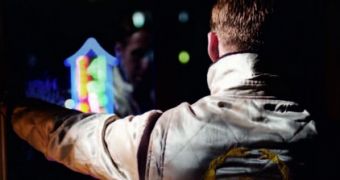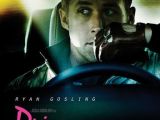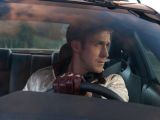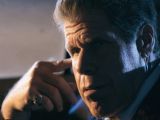The Driver in Nicolas Winding Refn’s latest movie “Drive,” as played by Ryan Gosling, doesn’t say much – but, when he does, he expects you to pay attention, which is probably why he always ends his sentences with “you understand?” The same goes for the film, whose credits might as well have ended with the caption “Do you understand?”
A classic existential nameless hero, Driver is as unnerving and terrifying as he is charming. Emotions run deep under his cool, frozen façade, even though viewers take at least half an hour to learn that.
Driver is a stunt driver in B-rated Hollywood movies who moonlights as a getaway driver for robbers. He’s a professional like no other, he gets the job done for a price, on the condition that everyone involved play by the rules of the game, clearly set out at the beginning.
Contrary to the name of the film, this is not a typical driving action movie, so those expecting to see a new take on “Le Transporteur” or “Fast and Furious” should probably consider skipping it.
It opens with a brilliant setpiece of Driver on his night job, fulfilling his part of the contract in a warehouse heist. Like the tuned Chevy Impala he drives, you would never take him for the criminal with nerves of steel he is, judging only by his warm smile and killer blue gaze.
He, like the machine behind whose wheel he sits, doesn’t simply run smooth: he crawls like a dangerous feline on a hunt and you never know when he might leap at you from the shadows.
Though he doesn’t seem to long for any human connection, he unexpectedly warms up to Irene (Carey Mulligan), so sweet and vulnerable that it would be nearly impossible to continue not feeling in her presence.
Irene has a son, Benicio, with Standard (Oscar Isaac), who is serving time in jail. One week after she and Driver meet for the first time and forge what could have been the beginning of a heartwarming romance, Standard returns home.
It would be easy to assume that, up next, Driver and Standard become enemies the moment they set eyes on each other, but this is not what “Drive” is all about.
Proving that he’s just as much of a gentleman as he is of a professional in his illicit activities, Driver takes a liking to Standard and even offers to help him out in a heist meant to clear off his jail debts – as if being nice to the husband would help him show his affections to Irene.
Things go really bad really soon, which is a first for Driver, and he winds up in a situation that can cost him his life – and Benicio and Irene’s. So, again for the first time ever, Driver breaks the rules to make things right again.
Ryan Gosling does a wonderful job as the silent, menacing (anti)hero, even though he’s the only member of the cast working with a script that offers him nothing to fall back on: Driver doesn’t have a backstory and he doesn’t have a justification for anything he does.
Driver exists because he drives. Admittedly, he yearns for human connection, but that too is only something one might infer from his later conduct, not something that is stated out loud.
The other characters that populate the neon-lit world created by Refn using some of the most isolated places and spaces in LA, on the other hand, have plenty to go on, thus allowing the stars to put on excellent performances.
Ron Pearlman makes for a ruthless Nino no one but Driver would want to cross paths with even if, at the end of the day, he’s nothing but a small-time mobster.
Mulligan, as expected, seems to bring the sunshine with her every time she steps into a room, together with a form of delicate sweetness that has come to be associated with her. She doesn’t seem the kind of woman that Driver would fall for, but perhaps that’s the whole secret.
However, aside from Gosling’s, it’s Albert Brooks’ performance as Bernie Rose that totally takes the cake. He’s not even remotely funny in this one and, what’s scarier, he seems to have always had a sick pleasure for getting his hands dirty regardless of consequences.
With such a wonderful cast and excellent writing, directing and editing, it’s no wonder “Driver” plays out like an art-noir-inspired film, with elements of modern-day action movies and an undercurrent of violence of a magnitude rarely seen in current releases.
“Drive” runs for 100 minutes and is rated R for strong brutal violence and language. It premiered at the Cannes Film Festival this year, opened in the US on September 16, will arrive in Italy on September 30 and conclude its run in Germany on January 26, 2012.

 14 DAY TRIAL //
14 DAY TRIAL // 





